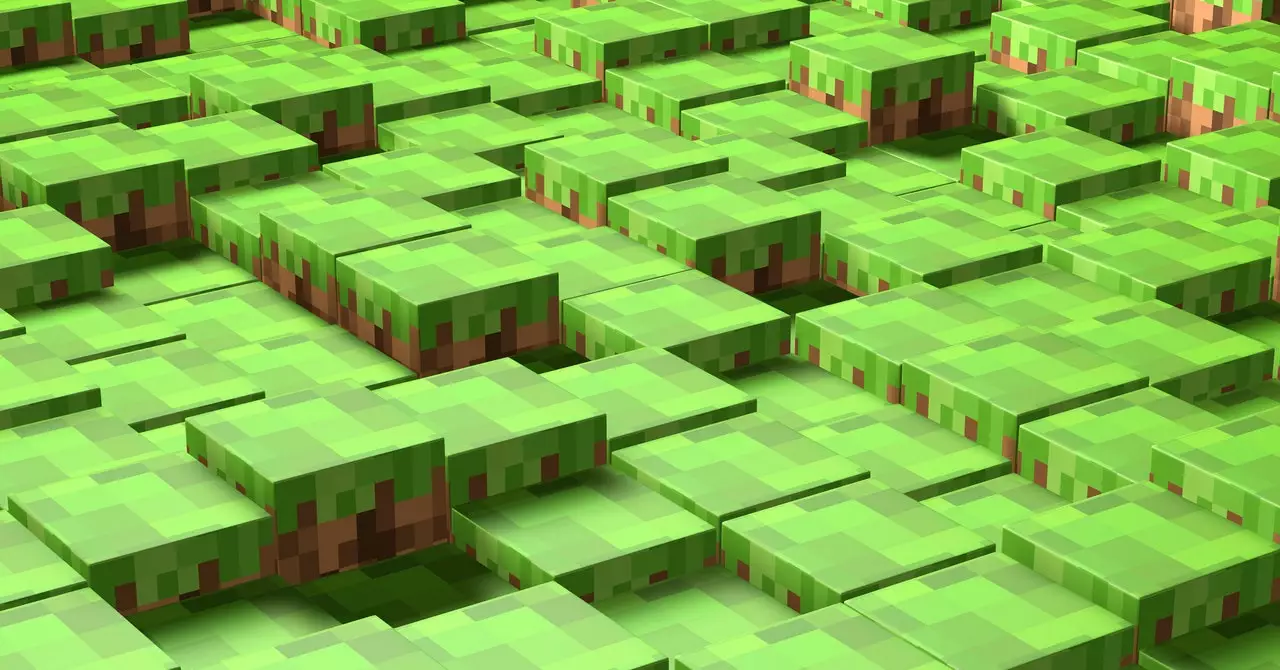Since its inception over a decade ago, Minecraft has captivated millions, offering an unparalleled blend of creativity, survival mechanics, and open-world exploration. Its charm lies in the freedom it provides players to build and explore at their own pace, crafting intricate structures and landscapes. The game’s pixelated, blocky world resonates with players young and old, creating a community that thrives on innovation and shared experiences. However, the realm of gaming is ever-evolving, and developers are continually seeking new avenues to engage players.
Enter Oasis, an ambitious knock-off launched recently by Israeli startup Decart in partnership with Etched, a custom silicon design firm. Oasis attempts to capture the essence of Minecraft while delivering a bizarre twist: an AI model that generates gameplay not through traditional coding but by “dreaming up” each frame. By leveraging a transformer AI model akin to the ones powering advanced language models, Oasis blends human input with machine-generated creativity, responding to user actions like clicks and mouse movements. Unlike existing video-generating models, Oasis uniquely intertwines user interaction with its generative processes, creating a surreal experience reminiscent of a dreamlike state.
This innovation marks a significant departure from typical gaming development processes. Rather than adhering to fixed programming rules, Oasis’s world is in constant flux, shaped by the AI’s imaginative interpretations of player interactions. It showcases the potential of AI-driven environments while simultaneously pushing the boundaries of traditional gaming.
What sets Oasis apart is its strange and ever-shifting landscape. Players encounter surreal artifacts and inconsistencies, such as oddly-formed animals and disorienting architecture, invoking a sense of whimsy and wonder. This dynamic nature contributes to its intriguing and almost hypnotic qualities, where the in-game environment behaves unpredictably based on the AI’s evolving vision. For instance, gazing closely at a texture can result in a significant change in the scene in mere moments.
Moreover, players can upload images, allowing the AI to adapt their visuals into the game’s aesthetic. An experience of uploading a cat photo, for example, shifts the player’s perception of their surroundings into an abstract representation of their beloved pet. Players have embraced such interactions, testing the boundaries of this innovative software to generate new, unforeseen environments, even leading to unexpected spaces reminiscent of the darker realms found in Minecraft.
The Viral Sensation and Player Engagement
Oasis has quickly become a viral phenomenon, driven largely by players experimenting with the AI’s capabilities. These explorations often center around teleporting to bizarre landscapes, akin to the mystical realm of The End in Minecraft. This playful engagement has sparked a fervor among enthusiasts, leading to discussions and community efforts to maximize the game’s unique AI features.
This spontaneous adaptability is one of the reasons behind Oasis’s rapid ascent in popularity. Robert Wachen, COO of Etched, notes the trend of players engaging in creative attempts to manipulate the AI, which adds an additional layer of excitement and unpredictability. As individuals seek to embark on their own adventures, the community around Oasis thrives on shared discoveries and explorations of the AI’s uncharted territory.
Despite Oasis’s intriguing premise, industry experts maintain a critical stance regarding its viability as a successor to conventional games. Julian Togelius, a computer science professor, highlights the inconsistency and unpredictability of the generative AI as hindering its functionality in traditional gaming contexts. While generative AI holds potential for shaping in-game characters and environments, Togelius emphasizes the infant stage of this technology, leaving it as more of a novelty than a fully-fledged gaming experience.
Meanwhile, game designer Frank Lantz recognizes the innovative spirit behind Oasis, suggesting that while it currently occupies a disconcerting space between enjoyment and eeriness, it holds promise if approached with a creative mindset. An enterprising designer might find a way to harness its quirky elements into a compelling gameplay experience, ensuring that the conversation around generative AI in gaming continues.
As Oasis captures the imagination of gamers, it serves as a testament to the evolving landscape of the gaming industry. The coming together of artificial intelligence and creativity in gaming generates dialogue about balance between innovation and player experience. Moving forward, it will be fascinating to observe the direction taken by developers, whether they choose to refine these technologies or dive deeper into the realms of AI-driven gameplay. The journey of Oasis may be just beginning, but its implications for future game development are poised to resonate for years to come.

